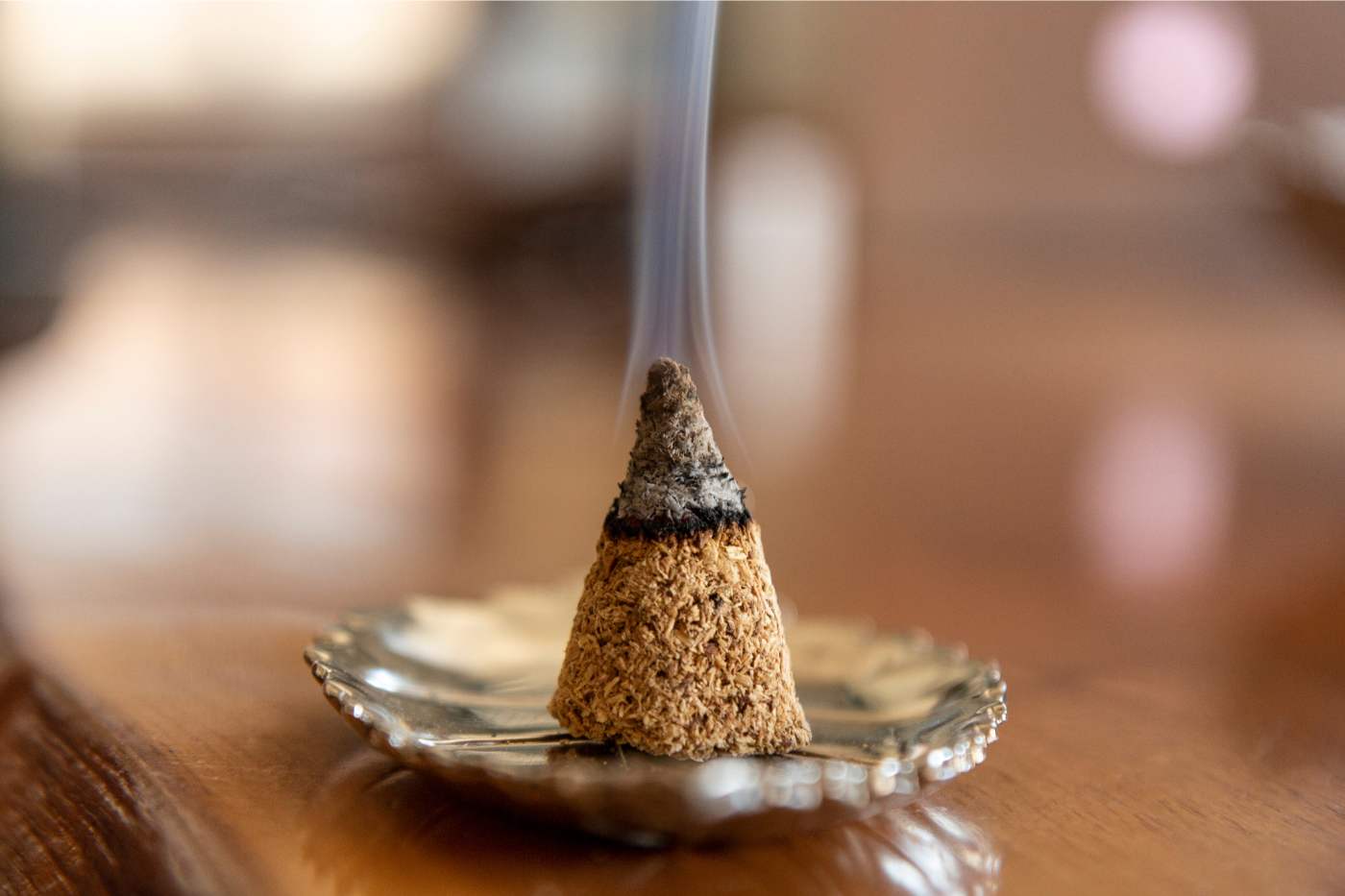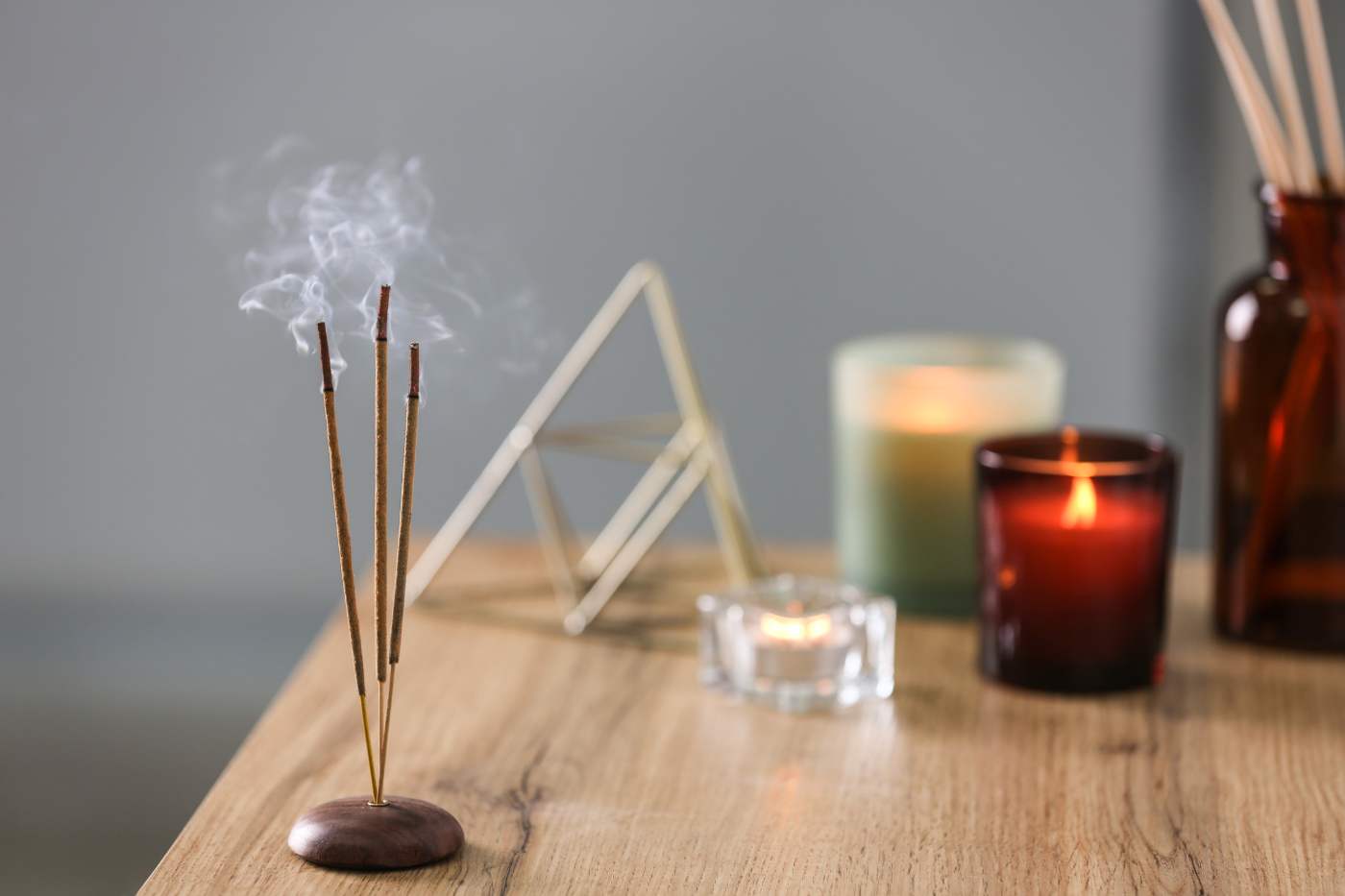In the world of aromatherapy and home ambiance, cedar incense stands out for its unique blend of rustic charm and tranquil properties. Revered since ancient times for its robust, grounding aroma, cedar incense offers more than just a pleasant scent—it's a journey into a realm of peace, purity, and spiritual rejuvenation. Ideal for incense waterfall setups, cedar incense transforms any space into a serene sanctuary.
What is Cedar Incense
Incense Cedar incense refers to a type of incense made from the wood or leaves of the Incense Cedar tree (Calocedrus decurrens), renowned for its distinctive, aromatic properties. This tree species, native to the western United States, particularly in areas like California and Oregon, has been valued for centuries, not only for its practical applications in woodworking and construction but also for its use in spiritual and aromatic contexts.
The incense made from Incense Cedar is appreciated for its warm, woody, and slightly spicy aroma, which is said to have calming and purifying effects. It's often used in meditation, yoga practices, and spiritual ceremonies to create a serene atmosphere, enhance focus, and facilitate a deeper spiritual connection. The scent of Incense Cedar incense is also believed to have grounding properties, helping to reduce stress and anxiety.

Cedar Incense Meaning and Benefits
Cedar incense carries a profound meaning and offers numerous benefits, deeply rooted in ancient traditions and natural wellness practices. Its use spans cultures and epochs, revered not only for its aromatic qualities but also for its spiritual significance and therapeutic properties.
Meaning of Cedar Incense
Spiritual Purification and Protection: Cedar is widely recognized for its purifying properties. Many cultures and spiritual traditions burn cedar incense to cleanse the space of negative energy, protect against unwanted influences, and create a sacred environment for meditation, prayer, and other spiritual practices.
Connection to Nature: The scent of cedar incense is a direct link to the natural world, evoking the serene and majestic essence of cedar forests. It symbolizes strength, endurance, and resilience, drawing on the tree’s longstanding symbolism across various cultures.
Renewal and Growth: Cedar trees are evergreen, remaining vibrant throughout the seasons. This characteristic makes cedar incense a symbol of eternal growth, renewal, and the cyclical nature of life, encouraging personal development and spiritual awakening.
Benefits of Cedar Incense
Emotional and Psychological Well-being:
- Stress Reduction: The warm, woody aroma of cedar incense has a calming effect on the mind, helping to reduce stress and anxiety. It promotes relaxation, making it ideal for use in stress-relief practices and before sleep.
- Improved Focus and Concentration: Burning cedar incense during activities requiring concentration, such as meditation, yoga, or work, can enhance focus and mental clarity, aiding in mindfulness and productivity.
Physical Health:
- Air Purification: Cedarwood's natural antiseptic properties are believed to help purify the air, potentially reducing harmful microbes and promoting a healthier living environment.
- Respiratory Relief: The aromatic properties of cedar can support respiratory health, helping to clear nasal passages and facilitate easier breathing, which is particularly beneficial during cold seasons or for those with respiratory conditions.
Spiritual and Ritual Use:
- Enhanced Spiritual Practices: Cedar incense is often used to enhance spiritual experiences, providing a grounding effect that aids in deeper meditation, prayer, and other spiritual practices.
- Energetic Cleansing: The burning of cedar incense is a common practice in rituals aimed at cleansing spaces and individuals from negative energy, fostering a positive and protective environment.
Natural Insect Repellent:
- The natural aroma of cedar is an effective deterrent for many types of insects, including moths and mosquitoes, making cedar incense a practical choice for natural pest control in addition to its aromatic and spiritual benefits.
Cedar Incense Scent
The scent of cedar incense is as grounding as it is refreshing, embodying the essence of the cedar forests from which it originates. This distinct aroma is characterized by a rich, woody base with hints of a crisp, almost sweet resinous quality, creating a fragrance that is both comforting and invigorating.
- Woody and Earthy: The primary note of cedar incense is unmistakably woody, reminiscent of walking through a dense cedar forest. This earthy foundation is comforting, bringing a sense of stability and grounding to any space.
- Slightly Sweet and Spicy: Beyond its robust woody base, cedar incense often carries subtle sweet and spicy undertones, adding complexity to its overall aroma. This slight sweetness is not overpowering but rather complements the earthiness, enhancing the soothing qualities of the scent.
- Clean and Fresh: Cedar's natural fragrance is known for its clean and fresh aspects, making it an excellent choice for purifying the air and eliminating odors. It leaves behind a scent that feels both purified and invigorated.
- Warm and Balsamic: Some cedar incense varieties also exhibit a warm, balsamic quality, adding to the richness of the scent. This warmth makes cedar incense particularly appealing during cooler months, as it adds a cozy, enveloping atmosphere to indoor spaces.
- Resinous: The resin from cedar trees contributes a distinct, slightly sharp resinous note to the incense, lending it an air of mystique and depth. This quality is often associated with the aroma of sacred spaces and spiritual rituals.

How Cedar Incense is Made
Cedar incense is made through a process that transforms the natural essence of cedar wood into forms that can be easily burned, releasing its distinct, aromatic fragrance. The method of making cedar incense varies slightly depending on the final form—be it sticks, cones, or loose incense. However, the fundamental steps involve preparing the cedar material, combining it with a binding agent if necessary, shaping the incense, and then allowing it to dry. Here's an overview of the general process:
1. Preparing Cedar Material
The first step is to gather and prepare the cedar material. This usually involves collecting cedar wood, which is then cleaned and dried to remove any moisture. The dry cedar wood is ground into a fine powder, which will serve as the base of the incense. For a stronger aroma, cedar resin or essential oil can also be added to the mix.
2. Mixing with a Binder (for Sticks and Cones)
- To make stick or cone incense, a natural binder is often needed to help the mixture hold its shape and burn consistently. Makko powder, a natural binder made from the bark of the Tabu-no-ki tree (Machilus thunbergii), is commonly used for this purpose due to its combustible properties and minimal scent.
- The cedar powder is mixed with the binder in a ratio that ensures the incense will burn smoothly. The exact ratio can vary, but a general guideline is to start with about 20-30% binder to cedar powder and adjust based on the desired burn rate and consistency.
3. Forming the Incense
- For cedar incense sticks: The mixture is combined with water to create a dough-like consistency. This dough is then either extruded through a press to form sticks or rolled and shaped by hand. The thickness of the sticks can affect the burn time, so consistency is key.
- For cedar incense cones: The same dough can be molded into cone shapes by hand or using molds. Cones are a popular choice for their ease of making and use.
- For loose incense: Cedar powder can be used as-is or mixed with other natural resins, herbs, and essential oils. This form doesn't require a binder or shaping but is instead sprinkled over a burning charcoal disc.
4. Drying
Once shaped, the incense must be thoroughly dried to prevent mold growth and ensure it burns properly. This is usually done by air drying in a well-ventilated area away from direct sunlight. The drying time can vary from a few days to a week, depending on the size of the incense and the humidity levels.
After the incense has dried completely, it is ready for use. It can be packaged in airtight containers and stored in a cool, dry place to preserve its fragrance.

Frequently Asked Questions about Cedar Incense
Here are some common questions and answers:
1. What are the main benefits of using cedar incense?Cedar incense is known for its ability to reduce stress and anxiety, purify the air, improve focus and concentration, and enhance spiritual practices. Its natural, woody scent is also effective in repelling insects and creating a calming, grounding atmosphere.
2. Can cedar incense be used in meditation and yoga practices?Yes, cedar incense is highly regarded for its grounding and calming properties, making it an excellent choice for meditation and yoga. The scent helps to create a serene environment, conducive to focus, mindfulness, and deep relaxation.
3. Is cedar incense safe for pets and children?While cedar incense is natural, it’s important to use it in a well-ventilated area, especially around pets and children, to avoid respiratory irritation. Some pets, particularly birds and small animals, are more sensitive to scents and smoke, so it’s best to use caution and monitor for any adverse reactions.
4. How does cedar incense compare to other types of incense?Cedar incense offers a unique woody and slightly sweet aroma distinct from other incenses like sage, which is more herbal, or frankincense, which has a sweet, citrusy scent. Cedar is particularly noted for its grounding and purifying properties, making it a favorite for those seeking a natural, forest-like atmosphere.
5. Can cedar incense help with sleep?The calming properties of cedar incense can create a relaxing environment conducive to sleep. Burning cedar incense before bedtime can help reduce stress and promote a sense of tranquility, aiding in the transition to sleep. However, ensure the incense is completely extinguished before going to sleep.
6. How long does cedar incense burn?The burn time of cedar incense can vary depending on its form (stick, cone, or coil) and composition. Generally, incense sticks can burn for 30 minutes to an hour, while cones may last for 20 to 30 minutes. Always refer to the manufacturer’s specifications for exact burn times.
7. What is the best way to burn cedar incense?For optimal results, cedar incense should be placed in a proper incense holder and lit in a well-ventilated area. If using sticks, light the tip, let it burn for a few seconds, then blow out the flame to allow it to smolder. For cones or coils, follow similar steps, ensuring they’re placed on a heat-resistant surface.
8. Where does the best cedar for incense come from?The quality of cedar incense often depends on the source of the cedarwood. Cedar trees from the Himalayas, the Cedar of Lebanon, and the American Cedar are all highly prized for their aromatic properties. The best choice can depend on personal preference and the specific characteristics of the cedar variety.
9. Can cedar incense be used outdoors?Absolutely, cedar incense is an excellent choice for outdoor spaces, not only for its pleasant aroma but also for its natural insect-repellent properties. It can enhance the ambiance of outdoor gatherings and provide a natural way to keep pests at bay.
10. How should cedar incense be stored?To preserve its fragrance, cedar incense should be stored in a cool, dry place, away from direct sunlight and moisture. An airtight container is ideal to keep the incense fresh for as long as possible.



